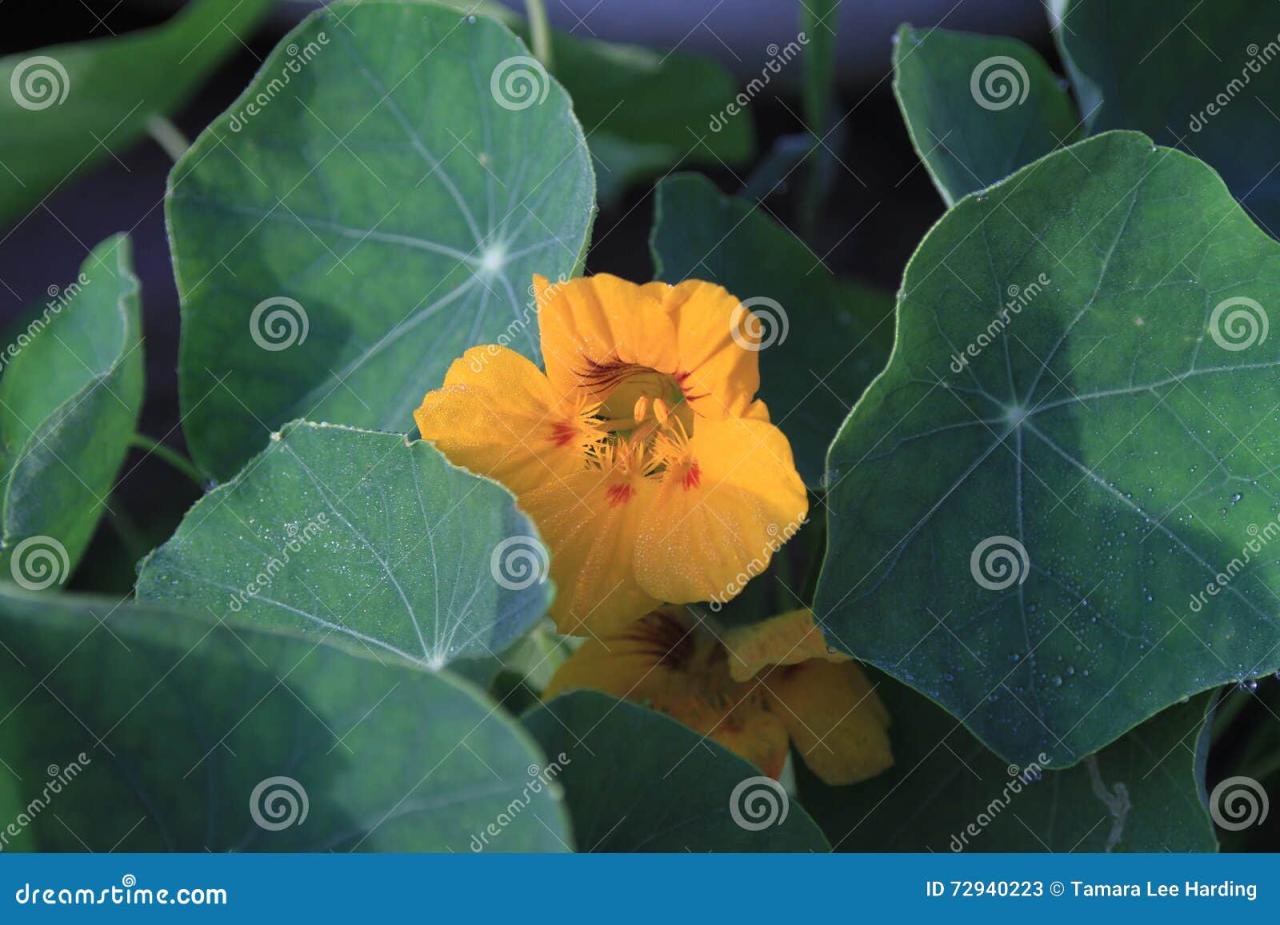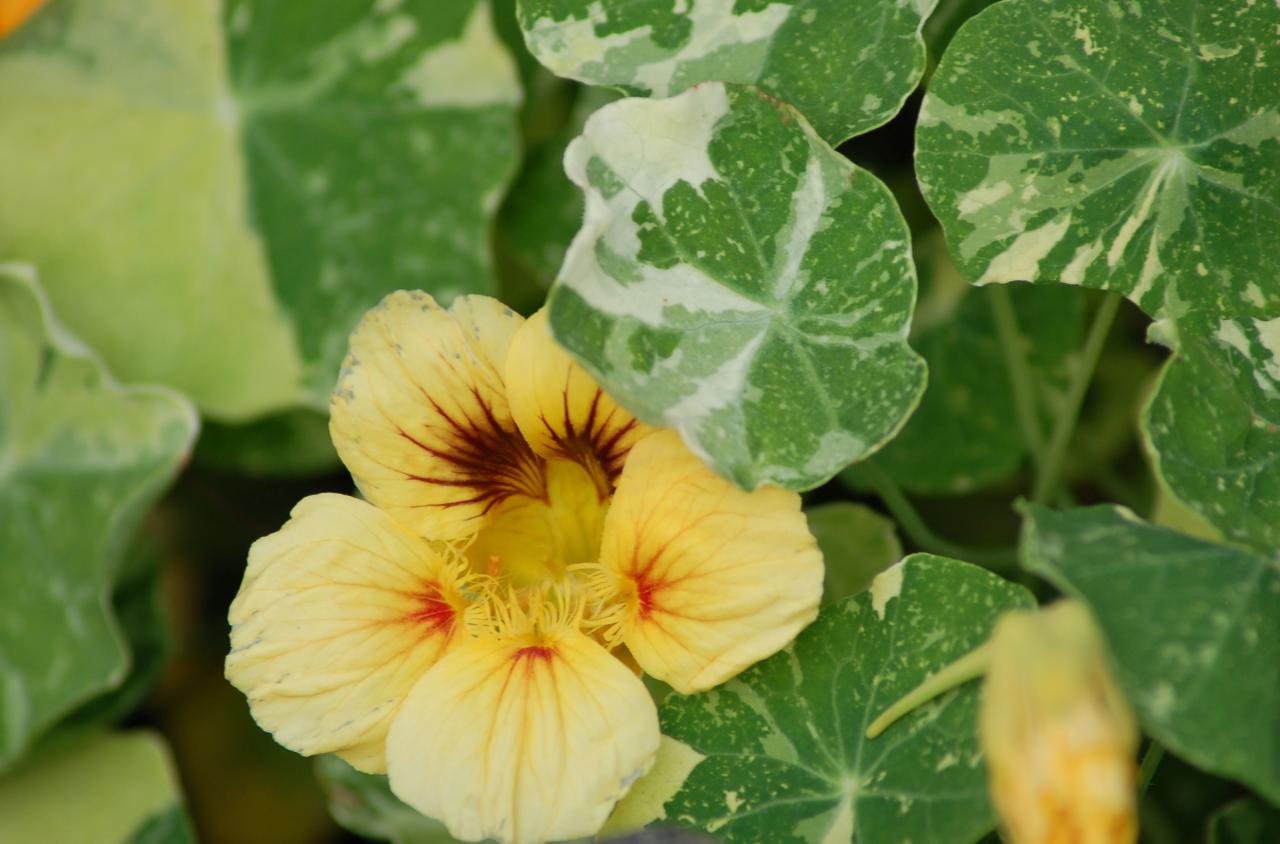Nasturtium Yellow Leaves – Nasturtiums (Tropaeolum majus) are vibrant, annual flowering plants known for their edible leaves and striking blossoms, which can add a splash of color to any garden or dish. However, when the leaves of your nasturtium turn yellow, it can be a cause for concern. Yellow leaves can indicate a variety of issues ranging from nutrient deficiencies to environmental stresses. In this comprehensive guide, we will explore the common reasons for yellowing leaves in nasturtiums, how to diagnose the problem, and what steps you can take to restore your plants to health.
Understanding Nasturtium Plants

Nasturtiums are beloved for their versatility in the garden. They are not only aesthetically pleasing, but their leaves and flowers are also edible, adding a peppery flavor to salads and other dishes. Typically, they thrive in well-drained soil and can grow in poor soil conditions, which makes them an excellent choice for gardeners.
Characteristics of Healthy Nasturtium Leaves
Healthy nasturtium leaves are characterized by a rich green color, a slightly glossy surface, and a unique circular shape. These leaves are succulent and have a vibrant appearance, indicating the plant’s vitality and good health. When observing yellow leaves, it is essential to diagnose the underlying cause effectively.
Common Reasons for Yellow Leaves on Nasturtium

Yellow leaves can be an alarming sight for gardeners. Below are some of the most common causes of yellowing in nasturtium plants:
1. Nutrient Deficiencies, Nasturtium Yellow Leaves
Nutrient deficiencies are often the most common reason for yellow leaves. Nasturtiums may suffer from a lack of nitrogen, iron, or magnesium.
Nitrogen Deficiency
A deficiency in nitrogen often results in the lower leaves turning yellow while the upper leaves remain green. This is because nitrogen is crucial for promoting healthy leaf growth.
Iron Deficiency
Iron deficiency typically manifests as yellowing between the leaf veins, while the veins themselves remain green. This condition is prevalent in alkaline soils.
Magnesium Deficiency
Magnesium deficiency can also cause yellowing in leaves, primarily appearing at the leaf edges and leading to a characteristic mottled appearance.
2. Watering Issues
Both overwatering and underwatering can cause yellow leaves. It’s crucial to maintain the right moisture level:
- Overwatering: Excessive moisture can lead to root rot and poor oxygenation of the roots, causing yellow leaves. Be sure to let the soil dry out slightly between watering.
- Underwatering: Lack of water can stress the plant, leading to wilting and yellowing leaves. Nasturtiums need consistent moisture, especially during dry spells.
3. Pests and Diseases
Pests such as aphids, spider mites, and whiteflies can suck the sap from the leaves, resulting in yellowing. Additionally, diseases like powdery mildew and root rot can severely impact your nasturtium.
Common Pests
- Aphids: Small insects that can cluster on the undersides of leaves, causing yellow spots.
- Spider Mites: Microscopic pests that thrive in hot, dry conditions, leading to stippling and yellowing.
- Whiteflies: Small white insects that feed on the sap and can leave a sticky residue on the leaves.
4. Environmental Stress
Sudden changes in temperature, exposure to harsh sunlight, or other environmental stresses can impact the color of your nasturtium leaves. Prolonged exposure to cold or extreme heat can result in stress that manifests as yellowing.
5. Soil pH Imbalance
Nasturtiums prefer slightly acidic to neutral soil (pH 6.0 to 7.0). If the soil is too alkaline, it can lead to nutrient deficiencies, particularly iron, resulting in yellow leaves.
| Soil pH | Effect on Nasturtiums |
|---|---|
| Below 6.0 | Potential nutrient excess; may lead to toxicity. |
| 6.0 to 7.0 | Ideal for healthy growth. |
| Above 7.0 | Increased risk of nutrient deficiencies (especially iron). |
Diagnosing the Problem
To properly diagnose why your nasturtium leaves are turning yellow, follow these steps:
Step 1: Inspect Leaves
Check the yellow leaves for any signs of pests, such as webs or small insects. This can help identify if pests are to blame for the yellowing.
Step 2: Check Soil Moisture
Use your finger to test the soil moisture. If the soil feels dry several inches down, the plant may need watering. If it feels soggy or overly wet, it could indicate overwatering.
Step 3: Assess Nutrient Levels
Consider performing a soil test to evaluate pH levels and nutrient content. This information can guide you in amending the soil appropriately.
Solutions for Yellow Leaves: Nasturtium Yellow Leaves
Once you’ve diagnosed the problem, you can take steps to remedy the situation:
1. Fertilize Appropriately
If nutrient deficiencies are suspected, consider using a balanced, slow-release fertilizer. Look for one that is high in nitrogen to promote leaf growth, as well as one that contains iron and magnesium.
2. Water Properly
Water your nasturtiums deeply but infrequently. Ensure that the pot or garden bed has proper drainage to prevent water from accumulating.
3. Pest Management
If pests are found, you can either manually remove them or apply insecticidal soap to eliminate them effectively. Regularly inspect plants to catch infestations early.
4. Adjust Environmental Conditions
If environmental stressors are present, consider relocating potted nasturtiums to a more suitable location or providing shade during the hottest parts of the day.
5. Modify Soil Conditions
If soil pH is too high, consider incorporating sulfur or organic matter to lower the pH and improve nutrient availability. Ensure good drainage and aeration to promote healthy root growth.
Note: Avoid over-fertilizing, as this can lead to a build-up of salts in the soil, which may also contribute to yellow leaves.
Preventing Yellow Leaves in Nasturtium
Prevention is key when it comes to maintaining the vibrant health of nasturtiums. Here are some essential tips to keep your nasturtiums thriving:
1. Regular Monitoring
Regularly inspect your plants for any signs of distress. Catching issues early on will allow for timely intervention.
2. Use Quality Soil
Start with good-quality, well-draining soil that has the right pH for nasturtiums. Consider adding compost to enrich the soil.
3. Practice Crop Rotation
If growing nasturtiums in a garden bed, rotate them with other plant types each year to prevent soil-borne diseases and nutrient depletion.
4. Water Management
Adopt a consistent watering schedule, allowing the soil to dry out slightly between watering sessions. This practice will help maintain healthy roots and foliage.
5. Choose Resistant Varieties
Consider planting varieties of nasturtiums that are known to be more resilient to pests and diseases. This can give your garden an added layer of protection.
By understanding the causes of yellow leaves in nasturtium plants and implementing the above strategies, you can ensure the health and vibrancy of your nasturtium plants. When cared for properly, these colorful plants can thrive, providing you with beautiful foliage and delicious edible flowers. 🌼
